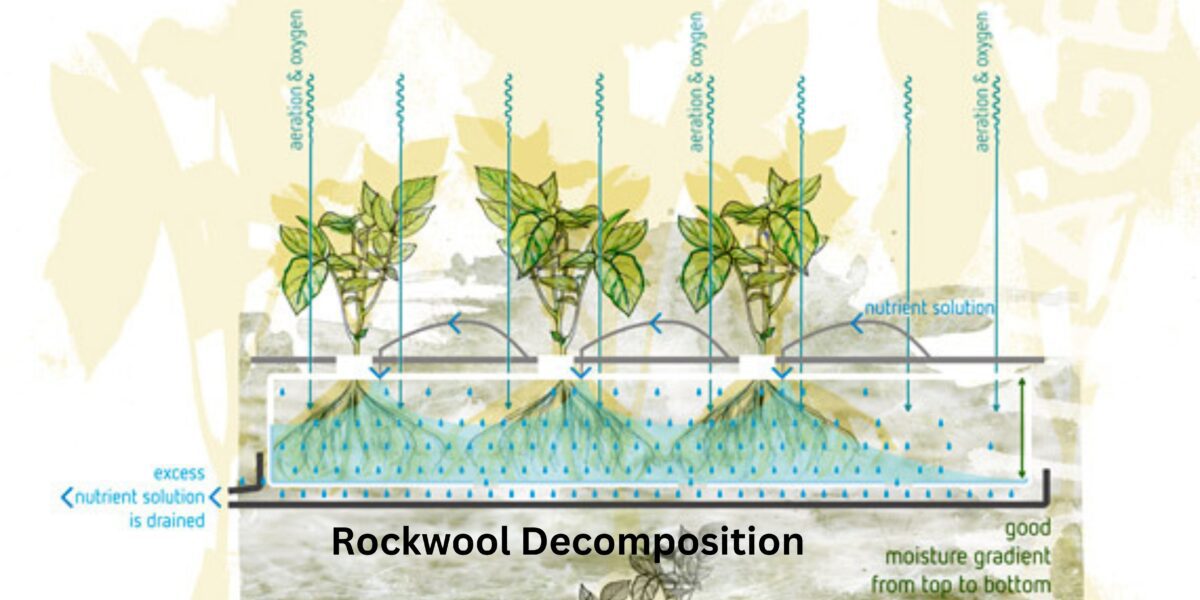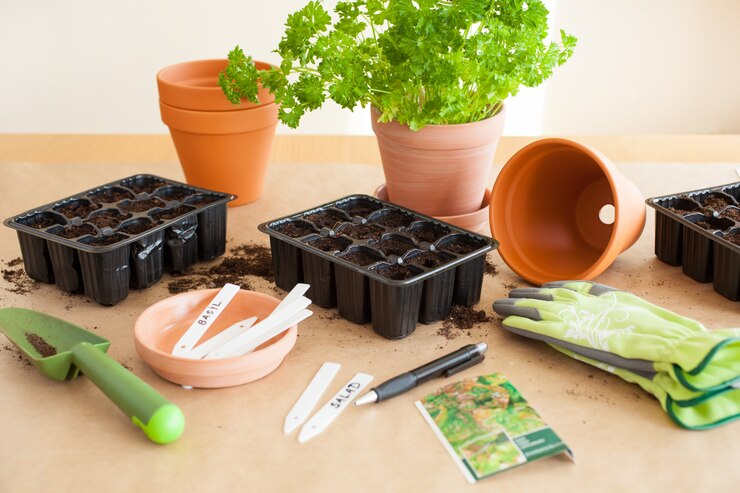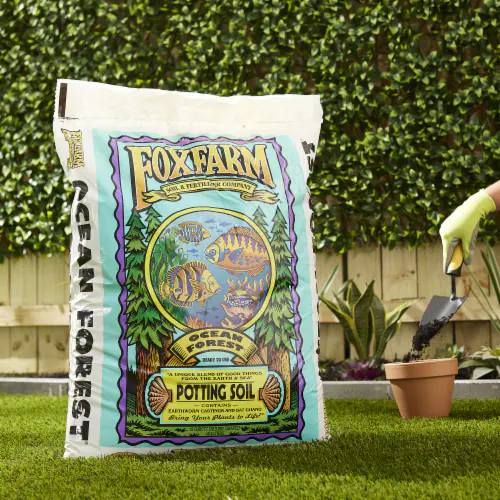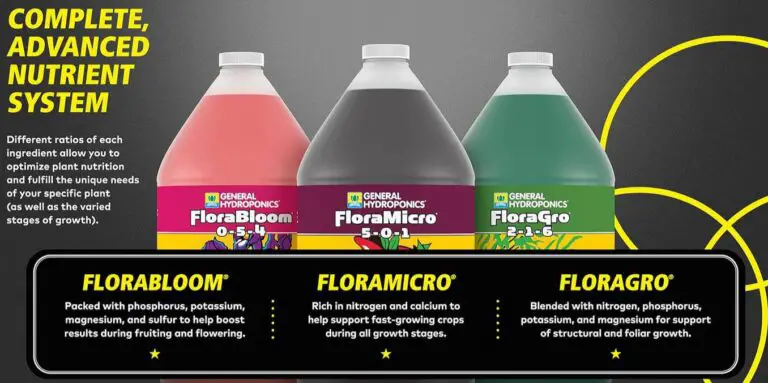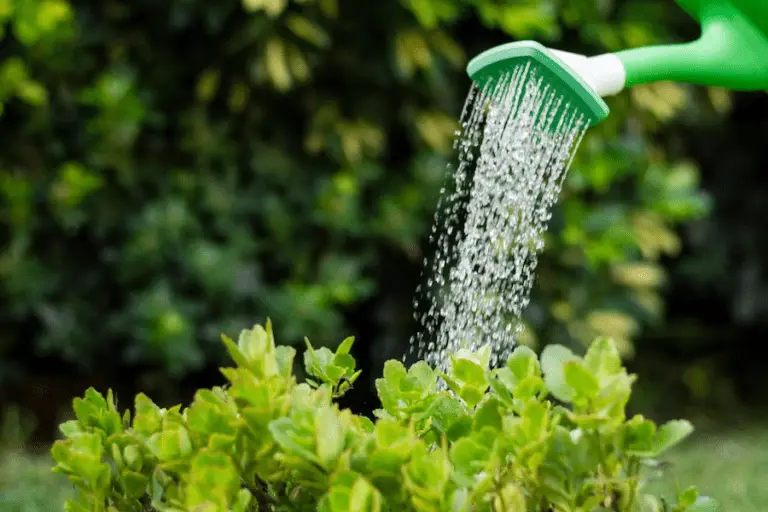Rockwool Decomposition: What It Is The Best Way to Prevent It in Hydroponics
Table of Contents
Symptoms of Rockwool Decomposition
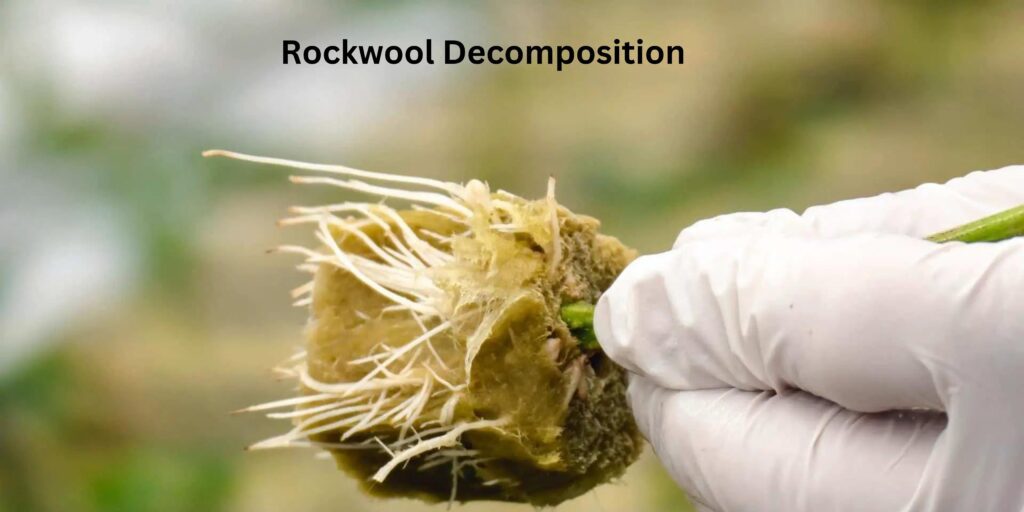
Rockwool is a popular substrate used in hydroponic systems for its excellent water retention and drainage properties. However, when rockwool decomposes, it can pose significant challenges to the health and productivity of hydroponic plants. Recognizing the symptoms of rockwool decomposition is crucial in order to address the issue promptly and effectively.
One of the first signs of rockwool decomposition is the appearance of a foul odor emanating from the substrate. This odor is often described as a musty or rotten smell, indicating the presence of harmful bacteria or fungi. Additionally, visual indicators such as discolored or blackened patches on the surface of the rockwool may be observed. These patches can be a result of fungal growth or the accumulation of organic matter, indicating an unfavorable environment for plant growth.
• Foul odor emanating from the rockwool substrate
• Musty or rotten smell indicating presence of harmful bacteria or fungi
• Discolored or blackened patches on surface of rockwool
• Patches may be a result of fungal growth or accumulation of organic matter
Understanding the Causes of Rockwool Decomposition
Rockwool decomposition is a concern that many hydroponics enthusiasts face. Understanding the causes of this decomposition is crucial in order to prevent it and ensure the longevity of rockwool substrates. One of the main causes of rockwool decomposition is excessive moisture. When the rockwool becomes oversaturated, it creates an anaerobic environment that promotes the growth of harmful bacteria and fungi. This can lead to the breakdown of the rockwool fibers and the release of toxic byproducts. To avoid this, it is essential to maintain proper moisture levels in the hydroponic system and ensure that the rockwool remains well-drained.
Another contributing factor to rockwool decomposition is the presence of high pH levels. Rockwool has a natural pH around 7.0, which is considered neutral. However, if the pH of the hydroponic solution becomes too alkaline, it can cause the rockwool to break down. This breakdown is due to the dissolution of the rockwool fibers at high pH levels. It is essential to regularly monitor and adjust the pH levels in the hydroponic system to prevent this decomposition. By keeping the pH within the recommended range for the specific crop being grown, the risk of rockwool decomposition can be significantly reduced.
• Excessive moisture in rockwool can lead to decomposition
• Oversaturation creates an anaerobic environment promoting harmful bacteria and fungi growth
• Breakdown of rockwool fibers and release of toxic byproducts can occur
• Proper moisture levels and drainage are crucial to prevent excessive moisture buildup
• High pH levels contribute to rockwool decomposition
• Rockwool has a natural pH around 7.0, considered neutral
• If hydroponic solution becomes too alkaline, it can cause breakdown of rockwool fibers
• Regular monitoring and adjustment of pH levels is necessary to prevent decomposition
By maintaining proper moisture levels, ensuring good drainage, and monitoring the pH levels in a hydroponic system, the risk of rockwool decomposition can be significantly reduced. This will help prolong the lifespan of the rockwool substrate and promote healthy plant growth. It is important for hydroponics enthusiasts to understand these causes in order to take proactive measures that will ensure optimal conditions for their plants.
The Importance of Preventing Rockwool Decomposition in Hydroponics
Preventing rockwool decomposition in hydroponics is of utmost importance for ensuring the success and longevity of your system. Rockwool is a popular and widely used substrate in hydroponics due to its excellent water retention and aeration properties, making it ideal for supporting plant growth. However, if not properly managed, rockwool can decompose over time, leading to numerous issues that can harm your plants and disrupt the overall functioning of your hydroponic system.
One of the primary reasons why preventing rockwool decomposition is crucial is because it can negatively impact the pH levels in your hydroponic system. As rockwool breaks down, it releases minerals and ions into the nutrient solution, altering its composition and potentially causing imbalances in pH levels. Fluctuating pH levels can directly affect nutrient uptake by plants and lead to deficiencies or toxicities, severely impacting their growth and overall health. Therefore, maintaining stable pH levels by preventing rockwool decomposition is vital to ensure optimal nutrient absorption and optimal plant development.
Another significant reason to focus on preventing rockwool decomposition is that it helps to avoid the accumulation of excess moisture in the substrate. Rockwool is designed to provide adequate moisture to plant roots while allowing for proper drainage. However, when rockwool decomposes, it can become compacted and lose its ability to retain and release water effectively. This can result in waterlogged conditions, leading to root rot, fungal growth, and diminished oxygen availability for the roots. By actively preventing rockwool decomposition, you can ensure that your plants receive the appropriate balance of moisture and oxygen, promoting healthy root development and overall plant growth.
In conclusion, recognizing and addressing the importance of preventing rockwool decomposition in hydroponics is crucial for maintaining the health and productivity of your plants. By doing so, you can avoid detrimental effects on pH levels, nutrient uptake, and moisture control, ensuring that your hydroponic system operates optimally and produces the desired results. Implementing proper maintenance practices and employing preventive measures will not only extend the lifespan of your rockwool substrate but also contribute to the overall success of your hydroponic endeavors.
• Rockwool decomposition can negatively impact pH levels in a hydroponic system
• Fluctuating pH levels can affect nutrient uptake by plants and lead to deficiencies or toxicities
• Maintaining stable pH levels is vital for optimal nutrient absorption and plant development
• Preventing rockwool decomposition helps avoid excess moisture accumulation in the substrate
• Decomposed rockwool can become compacted, leading to waterlogged conditions and root rot
• Proper prevention of rockwool decomposition promotes healthy root development and overall plant growth
• Recognizing the importance of preventing rockwool decomposition is crucial for maintaining plant health and productivity
• Implementing preventive measures extends the lifespan of rockwool substrate
• Proper maintenance practices contribute to the success of hydroponic endeavors.
Choosing the Right Rockwool for Hydroponics
Rockwool is a popular substrate utilized in hydroponic systems due to its excellent water retention properties and ability to provide sufficient oxygen to the roots. When choosing the right rockwool for hydroponics, several factors need to be considered to ensure optimal plant growth and prevent the decomposition of the substrate.
Firstly, it is crucial to select a rockwool product that has been specifically designed for hydroponics. These products are typically pH neutral or slightly acidic, which helps in maintaining the correct pH level of the nutrient solution. Moreover, hydroponic rockwool should have a high water holding capacity to ensure adequate moisture for the plants.
Additionally, the density of the rockwool should be taken into account. Dense rockwool has the advantage of providing better root support, while less dense rockwool allows for improved air circulation around the roots. It is essential to strike the right balance based on the specific needs of the plants being cultivated.
Furthermore, the size and shape of the rockwool cubes or slabs should be considered. Smaller cubes are suitable for growing smaller plants or starting seedlings, while larger slabs are better suited for larger plants with extensive root systems. It’s important to match the size of the rockwool with the size and requirements of the plants.
In conclusion, choosing the right rockwool for hydroponics requires careful consideration of factors such as pH neutrality, water holding capacity, density, and size. By selecting the appropriate rockwool product, gardeners can create an optimal growing environment for their plants and prevent decomposition of the substrate.
• Select a rockwool product specifically designed for hydroponics
• Ensure the rockwool is pH neutral or slightly acidic to maintain the correct pH level of the nutrient solution
• Choose rockwool with a high water holding capacity to provide adequate moisture for plants
• Consider the density of the rockwool, balancing root support and air circulation around roots
• Take into account the size and shape of rockwool cubes or slabs based on plant size and requirements.
In conclusion, choosing the right rockwool for hydroponics requires careful consideration of factors such as pH neutrality, water holding capacity, density, and size. By selecting the appropriate rockwool product, gardeners can create an optimal growing environment for their plants and prevent decomposition of the substrate.
Proper Handling and Storage of Rockwool
Rockwool is a widely used substrate in hydroponics due to its excellent water retention and aeration properties. However, proper handling and storage of Rockwool are crucial to ensure its effectiveness and longevity in hydroponic systems.
When handling Rockwool, it is essential to wear gloves to protect your hands from its abrasive texture. This will also prevent any potential irritation or allergic reactions. Additionally, always handle the Rockwool with care to avoid crushing or damaging the fibers, as this can hinder its performance as a substrate.
Proper storage is equally important to maintain the quality of Rockwool. Store it in a cool, dry place away from direct sunlight and moisture. Excessive exposure to sunlight and moisture can lead to the growth of algae, fungi, and bacteria, which can decompose the Rockwool and negatively affect plant health. Furthermore, it is advisable to keep Rockwool in its original packaging until ready to use to minimize the risk of contamination. By following these guidelines, gardeners can ensure that their Rockwool substrate remains in optimal condition, providing the best possible environment for plant growth in their hydroponic systems.
• Wear gloves when handling Rockwool to protect hands from its abrasive texture and prevent irritation or allergic reactions.
• Handle Rockwool with care to avoid crushing or damaging the fibers, which can hinder its performance as a substrate.
• Store Rockwool in a cool, dry place away from direct sunlight and moisture to maintain its quality.
• Excessive exposure to sunlight and moisture can lead to the growth of algae, fungi, and bacteria, which can decompose the Rockwool and negatively affect plant health.
• Keep Rockwool in its original packaging until ready to use to minimize the risk of contamination.
Maintaining Proper pH Levels to Prevent Rockwool Decomposition
Maintaining proper pH levels is imperative to prevent rockwool decomposition in hydroponics. Rockwool, a commonly used substrate in hydroponic systems, requires a specific pH range to ensure its longevity and effectiveness in supporting plant growth.
The pH level of the nutrient solution plays a crucial role in maintaining the stability of rockwool. Ideally, the pH should be maintained between 5.5 and 6.5 for most plants. This range allows for optimal nutrient availability and uptake, avoiding potential imbalances that can lead to deterioration of the rockwool substrate.
To monitor and adjust the pH levels, it is recommended to use a reliable pH meter or paper strips specifically designed for hydroponic applications. Regular measurements should be taken to ensure that the pH remains within the desired range. If the pH deviates, appropriate adjustments can be made by adding either pH-up or pH-down solutions to the nutrient solution.
By diligently maintaining the proper pH levels, hydroponic growers can prevent the decomposition of rockwool and ensure that their plants receive the necessary nutrients and support for healthy growth. It is essential to realize that the pH level is just one aspect of successful rockwool preservation. Other factors, such as temperature, moisture, and nutrient levels, also play significant roles and should be carefully managed to maximize the lifespan and effectiveness of the rockwool substrate.
• Maintaining proper pH levels between 5.5 and 6.5 is crucial for preventing rockwool decomposition in hydroponics.
• The pH level affects nutrient availability and uptake, ensuring the longevity of the rockwool substrate.
• To monitor pH levels, use a reliable pH meter or hydroponic-specific paper strips.
• Regular measurements should be taken to ensure that the pH remains within the desired range.
• Adjustments can be made by adding either pH-up or pH-down solutions to the nutrient solution.
• Properly maintaining pH levels ensures plants receive necessary nutrients for healthy growth.
• Other factors like temperature, moisture, and nutrient levels also impact rockwool preservation and should be carefully managed.
Controlling Temperature and Humidity in Hydroponic Systems

Maintaining optimal temperature and humidity levels in hydroponic systems is essential for the successful growth of plants and to prevent rockwool decomposition. Temperature affects the metabolic processes and overall health of plants, while humidity impacts transpiration and moisture levels. To ensure an ideal environment, it is crucial to closely monitor and control these factors.
Temperature control plays a significant role in hydroponic systems as it directly affects plant growth and development. Different plant species have specific temperature requirements, so it is important to research and understand the ideal temperature range for your chosen plants. Typically, most hydroponic plants thrive in temperatures between 65°F and 80°F (18°C and 27°C), but individual requirements may vary.
To maintain the desired temperature, consider implementing measures such as using grow lights with built-in cooling systems, employing ventilation and exhaust fans, and utilizing temperature control equipment like heaters or air conditioners. It’s crucial to regularly monitor the temperature using thermometers and adjust accordingly to prevent any adverse effects on plant growth and rockwool decomposition.
Humidity control is equally important in hydroponic systems. High humidity can lead to excessive moisture accumulation in the rockwool substrate, promoting the growth of harmful microorganisms and increasing the risk of decomposition. On the other hand, low humidity can result in excessive transpiration and dryness, affecting plant health.
To maintain optimal humidity levels, consider using a humidistat or hygrometer to measure the humidity in the grow room or greenhouse. If the humidity is too high, implement ventilation systems or dehumidifiers to remove excess moisture. Alternatively, if the humidity is too low, consider using humidifiers or misting systems to increase humidity levels.
Remember that different plants have different humidity preferences, so it is essential to research and provide the specific humidity requirements for your chosen plant varieties. Proper temperature and humidity control contribute to a stable and conducive environment for plant growth, preventing rockwool decomposition and ensuring healthy and thriving hydroponic systems.
• Maintaining optimal temperature and humidity levels in hydroponic systems is crucial for plant growth and preventing rockwool decomposition.
• Temperature affects metabolic processes and overall plant health, while humidity impacts transpiration and moisture levels.
• Research the ideal temperature range for your chosen plants as different species have specific requirements.
• Implement measures such as using grow lights with cooling systems, ventilation fans, heaters or air conditioners to maintain desired temperatures.
• Regularly monitor temperature using thermometers and adjust accordingly to prevent adverse effects on plant growth.
• High humidity can lead to moisture accumulation in rockwool substrate, promoting harmful microorganism growth and decomposition. Low humidity can result in excessive transpiration and dryness.
• Measure humidity using a humidistat or hygrometer; implement ventilation or dehumidifiers if it’s too high, use humidifiers or misting systems if it’s too low.
• Research specific humidity preferences for your chosen plant varieties.
• Proper temperature and humidity control create a stable environment for healthy hydroponic systems.
Avoiding Excessive Moisture in Rockwool Substrates
Excessive moisture in rockwool substrates can be detrimental to the health and productivity of hydroponic plants. When rockwool becomes saturated with water, it creates an environment that is conducive to the growth of harmful pathogens, such as Pythium and Phytophthora. These pathogens can attack the roots of plants, leading to root rot and eventually plant death. It is therefore crucial to avoid excessive moisture in rockwool substrates in order to maintain a healthy and thriving hydroponic system.
One way to prevent excessive moisture is by monitoring and adjusting the watering schedule. It is important to provide enough moisture for the plants to absorb, but avoid overwatering. Ensuring that the rockwool is not constantly saturated allows for proper oxygenation of the root zone, preventing the growth of anaerobic bacteria. Regularly check the moisture content of the rockwool by gently pressing it to assess its saturation level. If it feels excessively wet, it may be necessary to adjust the watering schedule or decrease the duration of irrigation cycles.
Another effective method to mitigate excessive moisture is to improve the drainage in the hydroponic system. Proper drainage allows excess water to flow away from the root zone, preventing it from being retained in the rockwool substrate. Consider installing drainage trays or using elevated grow tables to ensure that the excess water does not accumulate around the plants. Additionally, using a moisture meter can help to accurately measure the moisture level of the rockwool substrate and make necessary adjustments to prevent excessive moisture.
By diligently monitoring and managing moisture levels in rockwool substrates, hydroponic enthusiasts can effectively prevent excessive moisture, promote healthy root development, and maximize the overall productivity of their plants. The next section will discuss the importance of managing nutrient levels to further enhance the longevity of rockwool substrates in hydroponics.
• Regularly monitor and adjust the watering schedule to prevent overwatering
• Check the moisture content of rockwool by gently pressing it to assess saturation level
• Consider adjusting the watering schedule or decreasing irrigation cycles if rockwool feels excessively wet
• Improve drainage in the hydroponic system to allow excess water to flow away from the root zone
• Install drainage trays or use elevated grow tables to prevent accumulation of excess water around plants
• Use a moisture meter to accurately measure moisture levels in rockwool substrate
By diligently monitoring and managing moisture levels, hydroponic enthusiasts can:
– Prevent excessive moisture
– Promote healthy root development
– Maximize overall productivity of plants
Managing Nutrient Levels to Prevent Rockwool Decomposition
To prevent rockwool decomposition in hydroponics, it is crucial to effectively manage the nutrient levels in your system. Nutrient balance is key, as an excess or deficiency of nutrients can lead to the breakdown of rockwool and compromise the overall health of your plants.
One important aspect of managing nutrient levels is to regularly test and monitor the nutrient solution. This can be done using a variety of methods such as electrical conductivity (EC) and pH meters. By regularly measuring the EC and pH levels, you can ensure that the nutrient solution is within the optimal range for plant uptake and rockwool stability.
Maintaining the proper nutrient concentration is also essential. Different plants may have varying nutrient requirements, so it is important to understand the specific needs of the crops you are growing. Consult reputable sources or consult with a hydroponics expert to determine the appropriate nutrient concentration for your plants.
Furthermore, it is important to regularly replenish the nutrient solution with fresh, well-balanced nutrients. This will ensure that the plants have a continuous supply of the necessary elements and reduce the risk of nutrient imbalances that can contribute to rockwool decomposition.
In conclusion, managing nutrient levels is critical in preventing rockwool decomposition in hydroponics. By monitoring the nutrient solution, maintaining the proper nutrient concentrations, and regularly replenishing the nutrients, you can create an optimal growing environment that supports healthy plant growth and prolongs the longevity of your rockwool substrates.
• Regularly test and monitor the nutrient solution using methods such as electrical conductivity (EC) and pH meters.
• Measure EC and pH levels to ensure that the nutrient solution is within the optimal range for plant uptake and rockwool stability.
• Understand the specific nutrient requirements of your crops by consulting reputable sources or hydroponics experts.
• Adjust nutrient concentrations accordingly to meet the needs of your plants.
• Replenish the nutrient solution with fresh, well-balanced nutrients on a regular basis.
• This ensures a continuous supply of necessary elements and reduces the risk of nutrient imbalances that can contribute to rockwool decomposition.
Implementing Regular Inspections and Maintenance of Rockwool Substrates
Regular inspections and maintenance of rockwool substrates are crucial for ensuring the success of a hydroponic system. By implementing a routine inspection schedule, growers can identify and address any issues before they escalate into major problems.
During inspections, it is important to visually assess the condition of the rockwool substrate. Look for signs of decomposition, such as discoloration, foul odors, or the presence of mold and fungi. These indicators could suggest that the rockwool is breaking down and becoming a breeding ground for harmful pathogens. Prompt action should be taken if any signs of decomposition are detected.
In addition to visual inspections, it is recommended to regularly test the pH and nutrient levels in the rockwool substrate. pH levels outside the optimal range can contribute to the decomposition of the rockwool. Adjustments can be made by adding pH buffers or pH-up/down solutions as necessary. Monitoring nutrient levels is equally important to ensure that the plants receive the appropriate balance of macronutrients and micronutrients. Regularly checking and adjusting the nutrient solution will help prevent nutrient imbalances that can lead to decomposition of the rockwool substrate.
By conducting regular inspections and taking proactive maintenance measures, growers can extend the lifespan of their rockwool substrates and maintain a healthy hydroponic system. Stay tuned for more tips on how to preserve rockwool substrates and maximize the productivity of your hydroponic garden.
• Regular inspections and maintenance of rockwool substrates are crucial for the success of a hydroponic system.
• Implementing a routine inspection schedule helps identify and address issues before they become major problems.
• Visual assessment is important during inspections, looking for signs of decomposition such as discoloration, foul odors, or the presence of mold and fungi.
• Prompt action should be taken if any signs of decomposition are detected to prevent harmful pathogens from breeding in the rockwool substrate.
• Regularly testing pH levels in the rockwool substrate is recommended as pH levels outside the optimal range can contribute to decomposition. Adjustments can be made using pH buffers or pH-up/down solutions.
• Monitoring nutrient levels is equally important to ensure plants receive the appropriate balance of macronutrients and micronutrients. Regularly checking and adjusting the nutrient solution prevents nutrient imbalances that can lead to decomposition.
• Conducting regular inspections and proactive maintenance measures extends the lifespan of rockwool substrates and maintains a healthy hydroponic system.
Proper Cleaning Techniques for Rockwool in Hydroponics
Proper cleaning techniques are essential for maintaining the longevity of rockwool in hydroponics. Keeping the substrate clean not only prevents the buildup of harmful pathogens and contaminants but also ensures optimal nutrient uptake for the plants.
One effective method for cleaning rockwool is through a thorough rinsing process. After harvest, carefully remove the plants from the rockwool plugs or slabs and gently shake off any loose debris. Then, place the rockwool in a container and rinse it with clean, pH-neutral water. This will help remove excess salts, minerals, and leftover organic matter. It is crucial to use water with a pH level suitable for hydroponic systems to avoid any adverse effects on the plants.
After rinsing, it is recommended to soak the rockwool in a mild sterilizing solution. A commonly used solution is hydrogen peroxide, which can effectively kill pathogens and sanitize the substrate. Prepare a solution by diluting hydrogen peroxide with water according to the manufacturer’s instructions. Submerge the rockwool in the solution for a few minutes, ensuring all parts are thoroughly soaked. Finally, rinse the rockwool once again with clean water to remove any residual sterilizing solution.
By following these proper cleaning techniques, hydroponic growers can maintain the cleanliness and health of their rockwool substrates. Regular cleaning and maintenance will help prevent the accumulation of harmful pathogens and contaminants, ensuring optimal plant growth and success in hydroponic systems.
• Thoroughly rinse the rockwool with clean, pH-neutral water after harvest
• Gently shake off any loose debris from the rockwool plugs or slabs
• Use water with a suitable pH level for hydroponic systems to avoid adverse effects on plants
• Soak the rockwool in a mild sterilizing solution like hydrogen peroxide
• Dilute hydrogen peroxide with water according to manufacturer’s instructions before soaking the rockwool
• Ensure all parts of the rockwool are thoroughly soaked in the sterilizing solution
• Rinse the rockwool once again with clean water to remove any residual sterilizing solution
• Regular cleaning and maintenance will prevent accumulation of harmful pathogens and contaminants
Using Beneficial Microorganisms to Prevent Rockwool Decomposition
Beneficial microorganisms can play a crucial role in preventing rockwool decomposition in hydroponic systems. These microorganisms, often referred to as probiotics for plants, help establish a balanced and healthy environment within the rockwool substrate, inhibiting the growth of harmful organisms and promoting plant growth.
One of the main benefits of using beneficial microorganisms is their ability to compete with pathogenic bacteria and fungi for nutrients and space. By colonizing the rockwool substrate, these beneficial microorganisms create a protective barrier that limits the proliferation of harmful organisms. Additionally, they can produce antimicrobial compounds and enzymes that further suppress the growth of pathogens.
Studies have shown that incorporating beneficial microorganisms in hydroponic systems can significantly reduce the risk of rockwool decomposition and subsequent plant losses. For example, research conducted by Jackson et al. (2018) demonstrated that the application of specific strains of Bacillus spp. effectively controlled the spread of Pythium, a common root rot pathogen in hydroponics. Furthermore, the presence of beneficial microorganisms was also found to enhance nutrient absorption and root development, leading to improved crop yields.
Implementing beneficial microorganisms in hydroponics is relatively straightforward. This can be achieved through the addition of microbial inoculants or by using organic amendments that naturally harbor these microorganisms. It is important, however, to select strains that are compatible with the specific needs of the plants and are proven to be effective against common pathogens.
By harnessing the power of beneficial microorganisms, hydroponic growers can minimize the risk of rockwool decomposition and create a more sustainable and resilient growing environment. Incorporating these probiotics for plants into your hydroponic system can not only improve plant health but also contribute to the overall productivity and success of your gardening endeavors.
• Beneficial microorganisms create a balanced and healthy environment within rockwool substrate
• They compete with pathogenic bacteria and fungi for nutrients and space
• Beneficial microorganisms produce antimicrobial compounds and enzymes that suppress the growth of pathogens
• Research has shown that specific strains of Bacillus spp. can effectively control the spread of Pythium, a common root rot pathogen in hydroponics
• Beneficial microorganisms enhance nutrient absorption and root development, leading to improved crop yields
• Implementation of beneficial microorganisms can be achieved through microbial inoculants or organic amendments
• Strains should be selected based on compatibility with plant needs and proven effectiveness against common pathogens
Implementing a Proper Sterilization Routine for Hydroponic Systems
Implementing a proper sterilization routine for hydroponic systems is crucial to ensure the health and longevity of your plants. By eliminating harmful bacteria, fungi, and other pathogens, you create a clean and sterile environment that promotes optimal growth and prevents the decomposition of rockwool substrates.
One effective method of sterilizing your hydroponic system is through the use of chemical sanitizers. These sanitizers, such as hydrogen peroxide or bleach, can effectively kill off any harmful microorganisms present in the system. It is important to dilute these chemicals according to their recommended ratios and follow the necessary safety precautions during application.
Another technique to consider is heat sterilization. By subjecting your equipment, such as trays and reservoirs, to high temperatures, you can effectively destroy any pathogens. This can be done by using steam, boiling water, or even an autoclave. Be sure to thoroughly clean and dry the equipment before subjecting it to heat, as moisture can hinder the sterilization process.
Implementing a regular sterilization routine, ideally between growing cycles, is essential to prevent the build-up of harmful organisms and ensure a clean environment for your plants to thrive. By adhering to proper sterilization practices, you can mitigate the risk of rockwool decomposition and promote healthy growth in your hydroponic system.
• Dilute chemical sanitizers, such as hydrogen peroxide or bleach, according to recommended ratios
• Follow necessary safety precautions when applying chemical sanitizers
• Consider heat sterilization methods using steam, boiling water, or autoclave for equipment like trays and reservoirs
• Thoroughly clean and dry equipment before subjecting it to heat sterilization
• Implement a regular sterilization routine between growing cycles to prevent the build-up of harmful organisms
• Adhere to proper sterilization practices to mitigate the risk of rockwool decomposition
• Promote healthy growth in your hydroponic system by maintaining a clean environment.
Preventing Contamination in Rockwool Substrates
Preventing Contamination in Rockwool Substrates:
To maintain the health and productivity of your hydroponic system, it is crucial to prevent contamination in rockwool substrates. Contamination can lead to the growth of harmful pathogens, which can severely impact the growth of your plants and hinder their nutrient uptake. Fortunately, there are several measures you can take to safeguard your rockwool substrates from contamination.
Firstly, it is important to establish and maintain proper hygiene practices in your hydroponic system. Regularly sanitize all equipment, tools, and surfaces to eliminate any potential sources of contamination. Use a mild bleach solution or hydrogen peroxide to disinfect these components thoroughly. Additionally, make sure to wash your hands thoroughly before handling rockwool or any other hydroponic materials to prevent the introduction of contaminants.
Furthermore, implementing a strict protocol for handling and storage of rockwool can significantly reduce the risk of contamination. Start by sourcing rockwool from reputable suppliers and examine each batch for any signs of damage or contamination. Store rockwool in a clean, dry, and well-ventilated area, away from pests and rodents that can introduce pathogens. Properly sealed containers or bags can aid in preventing contamination and maintaining the integrity of your rockwool substrates.
By adhering to these preventive measures, you can ensure the optimal health and performance of your hydroponic system. However, it is important to regularly monitor your rockwool substrates for any signs of contamination and take immediate action if necessary. In the following sections, we will delve deeper into effective cleaning techniques and the use of beneficial microorganisms to further enhance the prevention of contamination in rockwool substrates.
• Regularly sanitize all equipment, tools, and surfaces using a mild bleach solution or hydrogen peroxide
• Wash hands thoroughly before handling rockwool or any other hydroponic materials
• Source rockwool from reputable suppliers and examine each batch for signs of damage or contamination
• Store rockwool in a clean, dry, and well-ventilated area away from pests and rodents
• Use properly sealed containers or bags to prevent contamination and maintain the integrity of rockwool substrates.
Choosing Suitable Alternative Substrates to Rockwool
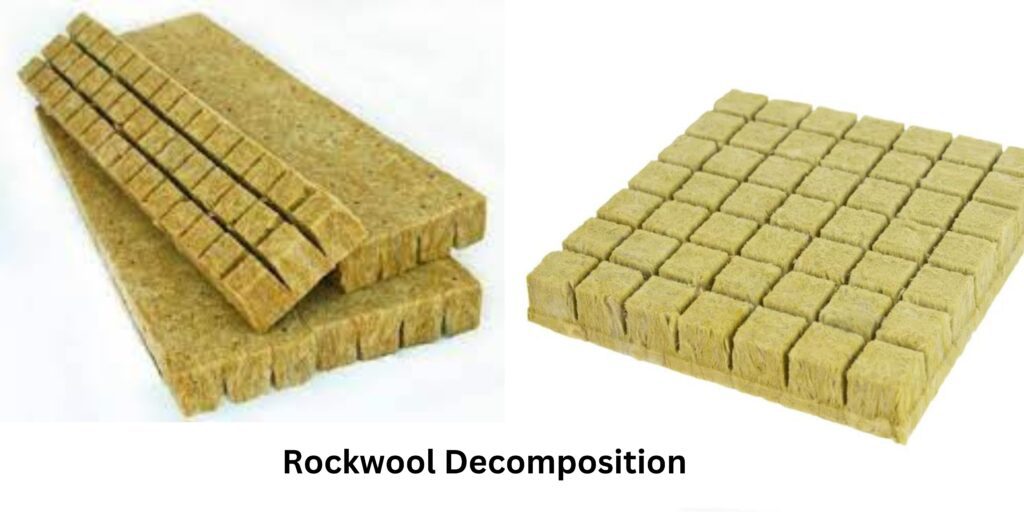
When it comes to hydroponic gardening, rockwool is a popular substrate choice due to its excellent water retention and aeration properties. However, there are alternative substrates available that can also provide optimal growing conditions for plants. One such alternative is perlite, a lightweight volcanic rock that is commonly used in horticulture.
Perlite is an excellent choice for those looking for a substrate that promotes good drainage while still retaining enough moisture for plant roots. It has a high porosity, allowing for the circulation of air and nutrients throughout the growing medium. Additionally, perlite is pH neutral, which means it won’t affect the acidity or alkalinity of the nutrient solution in your hydroponic system.
Another alternative to rockwool is coco coir, which is made from the fibers of coconut husks. Coco coir is an environmentally friendly option as it is a renewable resource. It has excellent water retention capabilities, allowing for consistent moisture levels in the root zone. Additionally, coco coir has a high cation exchange capacity, meaning it can hold and release nutrients effectively.
When choosing an alternative substrate to rockwool, it is essential to consider the specific needs of your plants and the requirements of your hydroponic system. Experimenting with different substrates can help determine which one works best for your specific setup and desired crop yield.
• Perlite is a lightweight volcanic rock that promotes good drainage and retains moisture for plant roots.
• It has high porosity, allowing air and nutrients to circulate in the growing medium.
• Perlite is pH neutral, so it won’t affect the acidity or alkalinity of the nutrient solution.
• Coco coir is made from coconut husk fibers and is an environmentally friendly option.
• It has excellent water retention capabilities and maintains consistent moisture levels in the root zone.
• Coco coir also has a high cation exchange capacity, effectively holding and releasing nutrients.
• Experimenting with different substrates can help determine which one works best for your specific setup.
Monitoring and Adjusting Hydroponic System Parameters for Rockwool Preservation
To ensure the preservation of rockwool substrates in hydroponics, it is crucial to monitor and adjust various system parameters. Understanding these parameters and their impact on rockwool decomposition is essential for maintaining a healthy and productive hydroponic system.
One of the critical parameters to monitor is the pH level of the nutrient solution. Rockwool decomposes rapidly in acidic conditions, so it is vital to regularly test and adjust the pH to keep it within the optimal range for the chosen crop. Most plants thrive in a slightly acidic to neutral pH range of 5.5 to 6.5. Utilizing pH testing kits or meters can help accurately measure and adjust the nutrient solution pH, promoting rockwool preservation.
Another important parameter to consider is temperature and humidity control. High temperatures and excessive humidity can accelerate the decomposition process of rockwool. It is necessary to maintain an optimal temperature range that promotes plant growth while preventing the substrate from becoming too hot. Additionally, controlling humidity levels within the recommended range helps minimize the risk of moisture accumulation and subsequent decomposition. Regular monitoring and adjustment of temperature and humidity using proper ventilation systems and climate control devices are essential for preserving rockwool substrates in hydroponics.
By closely monitoring and adjusting these system parameters, hydroponic growers can effectively prevent rockwool decomposition and ensure the longevity of the substrate. Implementing these practices alongside regular inspections, proper cleaning routines, and preventative measures against contamination will help maintain a healthy and productive hydroponic system.
• Regularly test and adjust the pH level of the nutrient solution to keep it within the optimal range for rockwool preservation (pH 5.5 to 6.5).
• Utilize pH testing kits or meters for accurate measurement and adjustment of the nutrient solution’s pH.
• Maintain an optimal temperature range to promote plant growth while preventing excessive decomposition of rockwool.
• Control humidity levels within recommended ranges to minimize moisture accumulation and subsequent decomposition.
• Use proper ventilation systems and climate control devices for regular monitoring and adjustment of temperature and humidity.
• Implement regular inspections, proper cleaning routines, and preventative measures against contamination to maintain a healthy hydroponic system.
Rockwool is a popular growing medium in hydroponics, but it does not decompose in the same way organic materials might. However, over a very long time, it may undergo some physical changes. Here’s a table with information about Rockwool and its characteristics:
| Aspect | Description |
|---|---|
| Composition | Made from molten basalt rock spun into fibers. It’s inert and does not decompose in the traditional sense. |
| Biodegradability | Rockwool is not biodegradable in the same way as organic materials. It doesn’t break down into natural elements. |
| Longevity | Known for its durability and stability. Can last for multiple growing seasons without significant degradation. |
| Physical Changes Over Time | Over an extended period, it might experience minor physical changes, such as compaction or reduction in volume. |
| Environmental Impact | Non-biodegradable nature can raise concerns about long-term waste. Proper disposal methods are recommended. |
| Disposal | Best practices involve recycling if possible. Some jurisdictions have specific guidelines for Rockwool disposal. |
| Recyclability | Some programs exist for recycling Rockwool. It can be melted down and repurposed into new insulation or other products. |
| Impact on pH and Nutrient Solution | Initially, Rockwool may have a slightly alkaline pH, but this can be mitigated with proper preparation and rinsing. |
| Microbial Interaction | Lacks microbial activity compared to organic substrates, reducing the risk of decomposition by microorganisms. |
It’s important to follow manufacturer guidelines for the use and disposal of Rockwool, and local regulations should be considered for proper waste management. Recycling is an environmentally friendly option when available.
Conclusion: Ensuring Longevity of Rockwool Substrates in Hydroponics
Rockwool substrates are a crucial component of hydroponic systems, providing support and a suitable environment for plant growth. To ensure the longevity of rockwool substrates in hydroponics, it is important to implement proper maintenance and preventive measures.
Regular inspections and maintenance of rockwool substrates are essential in identifying any signs of decomposition early on. This includes checking for discoloration, foul odor, or the presence of mold or algae. Any affected areas should be immediately removed and replaced with fresh rockwool to prevent further deterioration.
Maintaining proper pH levels is also crucial in preventing rockwool decomposition. Rockwool substrates thrive in a slightly acidic environment, with an optimal pH range between 5.5 and 6.5. Regularly monitoring and adjusting the pH levels ensures that the rockwool remains in a suitable condition for plant growth and prevents the growth of harmful microorganisms.
Controlling temperature and humidity within hydroponic systems is another important factor in preserving rockwool substrates. High temperatures and excessive moisture can contribute to the breakdown of the rockwool structure. Installing ventilation systems, utilizing fans, and implementing proper insulation can help regulate temperature and humidity levels, thus minimizing the risk of decomposition.
By implementing these preventive measures and ensuring proper care and maintenance, hydroponic enthusiasts can significantly extend the lifespan of rockwool substrates. This not only enhances the overall productivity of the hydroponic system but also contributes to the successful growth and development of plants.
• Regularly inspect and maintain rockwool substrates to identify signs of decomposition early on
• Remove and replace any affected areas immediately to prevent further deterioration
• Maintain proper pH levels between 5.5 and 6.5 to prevent rockwool decomposition
• Regularly monitor and adjust pH levels to ensure a suitable condition for plant growth
• Control temperature and humidity within hydroponic systems to preserve rockwool substrates
• Install ventilation systems, utilize fans, and implement proper insulation to regulate temperature and humidity levels
• Implement preventive measures and ensure proper care and maintenance to extend the lifespan of rockwool substrates in hydroponics
What are the symptoms of rockwool decomposition in hydroponics?
Symptoms of rockwool decomposition may include discoloration, foul odor, reduced water retention, and poor plant growth.
What are the causes of rockwool decomposition in hydroponics?
Rockwool decomposition can be caused by high pH levels, excessive moisture, inadequate ventilation, nutrient imbalances, and contamination.
How can I prevent rockwool decomposition in hydroponics?
To prevent rockwool decomposition, you should choose the right rockwool, handle and store it properly, maintain proper pH levels, control temperature and humidity, avoid excessive moisture, manage nutrient levels, and regularly inspect and maintain the rockwool substrates.
What should I consider when choosing rockwool for hydroponics?
When choosing rockwool for hydroponics, consider the density, water retention capacity, pH stability, and fiber durability of the rockwool.
How should I handle and store rockwool in hydroponics?
It is important to handle rockwool with clean hands or gloves and store it in a dry and clean area, away from contaminants and extreme temperatures.
How can I maintain proper pH levels to prevent rockwool decomposition?
Regularly monitor and adjust the pH levels of the nutrient solution to ensure it remains within the optimal range for the specific crop being grown.
How can I control temperature and humidity in hydroponic systems to prevent rockwool decomposition?
Implement proper ventilation, insulation, and temperature control measures to maintain optimal temperature and humidity levels in the hydroponic system.
How can I avoid excessive moisture in rockwool substrates?
Avoid overwatering the plants and ensure proper drainage in the hydroponic system to prevent excessive moisture buildup in the rockwool substrates.
How can I manage nutrient levels to prevent rockwool decomposition?
Regularly monitor and adjust the nutrient levels in the hydroponic system to prevent nutrient imbalances that can lead to rockwool decomposition.
How often should I inspect and maintain rockwool substrates?
It is recommended to inspect and maintain rockwool substrates on a regular basis, ideally weekly, to identify and address any signs of decomposition or issues.
What are the proper cleaning techniques for rockwool in hydroponics?
Proper cleaning techniques for rockwool in hydroponics involve rinsing it with clean water and using a mild disinfectant solution to remove any contaminants.
How can beneficial microorganisms prevent rockwool decomposition?
Introducing beneficial microorganisms, such as beneficial bacteria or fungi, can help promote a healthy microbial balance in the hydroponic system, preventing rockwool decomposition.
How can I properly sterilize my hydroponic system to prevent rockwool decomposition?
Implement a routine sterilization process using appropriate disinfectants to eliminate any pathogens or contaminants in the hydroponic system that can contribute to rockwool decomposition.
How can I prevent contamination in rockwool substrates?
Prevent contamination in rockwool substrates by using clean water and nutrient solutions, maintaining proper hygiene practices, and regularly cleaning and disinfecting the hydroponic system.
What are some suitable alternative substrates to rockwool in hydroponics?
Some suitable alternative substrates to rockwool in hydroponics include coconut coir, perlite, vermiculite, peat moss, and clay pellets.
How should I monitor and adjust hydroponic system parameters to preserve rockwool?
Regularly monitor and adjust parameters such as pH, nutrient levels, temperature, humidity, and ventilation to optimize the conditions for rockwool preservation in the hydroponic system.

